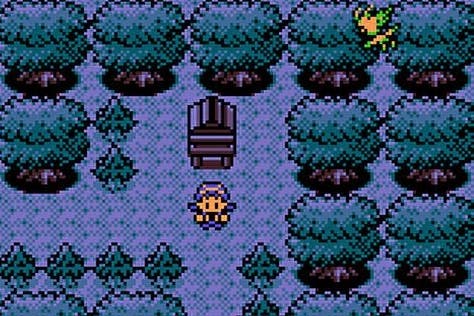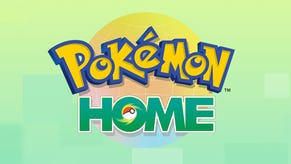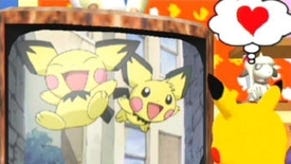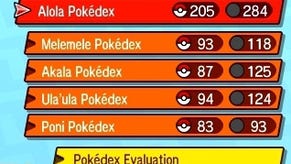Why Pok¨Śmon Crystal will always be the best Pok¨Śmon game
Reflections on a classic.
Nine-and-a-half: this is the sort of mental age I ascribe to Pokémon. To first playing it, that is, but you could say it probably also fits the mental age of Pokémon themselves, too, in a roundabout way. It's that weird bit of life you occupy right between having an adult brain and a child's - right after you start to pick up a moral compass that goes beyond just doing what you're told, to a sense of duty or justice, but right before you're really sentient enough to start thinking about why that is. Permit me to really overcommit to a point here: as humans, we are probably closest to Pokémon when we're about nine-and-a-half.
For me, that very specific age is tied very specifically to my memories of Pokémon Crystal, a game which, after roughly 17 years of languishing on old, forgotten cartridges, sees its return to the hands of nine-and-a-half-year-olds today, on the 3DS.
Remembering what it's like to be nine-and-a-half, and the weird, golden hour fuzz it glazes everything with, makes it very difficult for me to figure out why Pokémon Crystal is such a special game. I know it definitely is a special game but I also know nine-and-a-half-year-old Chris well enough to realised I'd have loved it even if it wasn't. The more I try to remember playing it for the first time the harder it is to prove it isn't just one of those games, the ones that we all have, that tangle up with your consciousness, and sometimes even your sense of identity, because when you look back on your memories of it you're remembering yourself, at that age and at that time, as much as you're remembering the game.
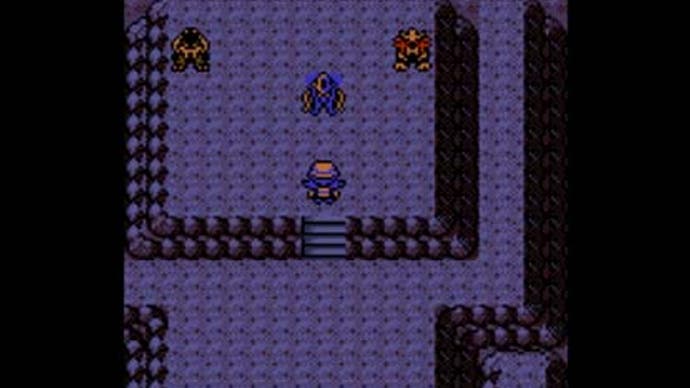
I've spent a fair bit of time thinking about Pokémon Crystal, as a result of all that - and I regularly think about Pokémon as it is. But however hard I try to find an explanation of why Pokémon Crystal is so good - why it's the best - I just can't narrow it down. There are lots of obvious answers, but no clear ones.
I suppose, for an obvious start, it's the new, improved version - the 'enhanced edition' - of what are already the two most critically acclaimed games in an already critically acclaimed series. Pokémon Gold and Pokémon Silver were and probably still are the epitome of sequels done right. They merge disparate nostalgia and innovation with impeccable craftsmanship and finesse.
Gold and Silver brought an enormous amount of new features and mechanics to Red, Blue and Yellow. Features like a time and day-night cycle, Berries, held items, specialised Poké Balls, new types, new forms of evolution, breeding, Pokémon Eggs, a split between Special Attack and Special Defense, the Pokégear and even the Move Deleter, something that seems essential now but only appeared in the games back then so that you could trade Pokémon with Gold- and Silver-exclusive moves back to Red, Blue and Yellow.
Gold and Silver, despite their obvious similarities to the earlier generation, brought an enormous amount of change to the series. The one that always stood out to me was the Pokégear, the most of-its-time addition that, apparently, was heavily influenced by the massive surge in owners of mobile phones amongst Japan's youth at the time. Having trainers call you up just to offer some repeated dialogue about some "rare" (often not at all rare) Pokémon spawning nearby was just so very analogue, almost quaint by modern standards. It's also the closest Pokémon has come to touching the world as we lived it ourselves.

It points to something else about Gold and Silver that gave them such weight - their similarly quaint, restricted, painterly illustration. It was and is masterful. Think of a Pokémon sprite and you will probably think of how it looked in Gold and Silver before you would its original from the first generation, or any other. Ken Sugimori's artwork is, I'd say, the central reference point for a lot of people's quite nebulous memories of a massive, ever-changing franchise. It's also the epitome of that old saying about great things coming from restriction, with only two colours per Pokémon - plus black and white - available at a time.
Amazingly, Gold and Silver's visuals were actually noted for being a little rudimentary back then. It was the end of the Game Boy's time - in fact the Game Boy Colour had already been out for two years by the time Gold and Silver arrive in the West - and other games could probably get more than two of those colours on screen at once. But "rudimentary" may it be, the quality of the tech kind of misses the point.
One example, as a spot of well-recited trivia will tell you, is Ecruteak City, the settlement that plays home to two towers, the game's legendary dogs and one of its cover stars, the pseudo-phoenix Ho-oh. It's based on the real city of Kyoto - which happens to have a gold and a silver-coloured temple at either side of town. The gold one, which burnt down in the 1950s, has a phoenix statue on its roof. Gold and Silver were dedicated to representing Japanese culture, and that seeps through at every level of its restrained style, even when you put the cute real-world references aside. You get Japan from the trees, stoic, until a big bug Pokémon falls out; the woods - where rumour had it the mythical Celebi will present itself to you; the intrusion of man on the tranquility of Magikarp in the Lake of Rage; the gentle, dreamy lapping of waves on the shore.
But this was all in Gold and Silver, right? So what was it about Crystal?
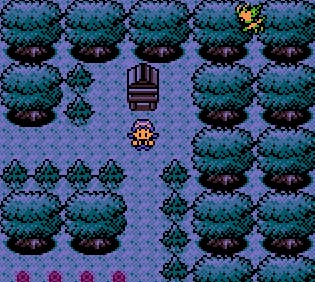
Well, Crystal really did improve on them. Another weird bit of trivia has it that Pokémon Crystal actually topped out as the only game in the series - before 2010's Black and White - to have more than two frames of animation for the Pokémon when they entered battle. Maybe that sprinkling of extra life brought about the attachment we all had to our Pokémon back then. Or maybe it's the fact that Crystal was the first to really have a "story" as we know it, bringing Suicune, one of Gold and Silver's legendary dogs, to the fore and building the first proper "chosen one" narrative of the series. Crystal was a big fat cherry on top of the best cake I've ever eaten.
But is that it? Is that all it takes for a game to feel special? Little tweaks and improvements that you point out by looking it square in the face and deciding what a game is and what it isn't? Have I untangled the good game from the good memory?
Perhaps I didn't need to. Perhaps the really special ones, that we blend into and that blend into us, do so precisely because they were made with such peerless artistry, because they're filled with such immense wonder and imagination and that same wonder and imagination is what we felt as we played them. Maybe we just needed to be receptive to all that to really get it, and all it takes to know what it is for a game to be special is to know what it is to be nine-and-a-half.
